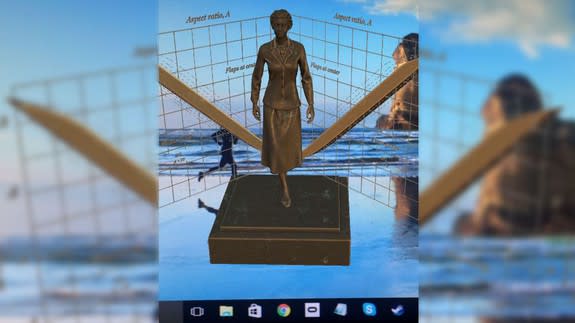Augmented reality app from IBM and NY Times tries to make history fun

Using virtual reality to immerse people in history has become increasingly common in recent months, but a new collaboration between IBM and the New York Times instead relies on augmented reality.
The Outthink Hidden app allows users to visit 150 locations around the U.S. to discover AR statues of leaders in science and technology.
SEE ALSO: Now you can experiment with makeup in augmented reality
Many locations feature an empty pedestal affixed with a QR code. When that QR code is triggered by the app, an AR statue appears, which can be moved around 360 degrees. Each virtual statue will also offer access to biography information, as well as images and audio content.
Among the science and technology greats featured are Mary Walton (inventor and engineer), Bessie Blount Griffin (inventor), Mary Jackson (engineer and mathematician), Katherine Johnson (physicist) and as well as six other historic figures. If some of the names and the term "hidden" sound familiar in this particular context, it's because the app was inspired by the recent film Hidden Figures, which depicts the story of unheralded black women who worked for NASA during the early '50s space race.

Image: nytimes
In addition to highly trafficked locales like New York City, Washington, D.C., San Francisco and Los Angeles, the AR statues will also have QR code-emblazoned pedestals at the NASA Langley Research Center, the Kennedy Space Center, the Computer History Museum in San Francisco and universities including Cornell, Princeton, University of Michigan, Northwestern, California Polytechnic State, North Carolina State and Duke.
Aside from the future implications of marrying this kind of app-based education with geolocation, the other innovation here is the gamification of history education by making finding the AR statues amazingly similar to hunting down creatures in Pokémon Go.
After the initial rollout of the AR statues around the nation, in the following months the app will allow users to access the statues from any location while using the app. The free app can be downloaded on both iOS and Android devices starting Wednesday.

 Yahoo News
Yahoo News 